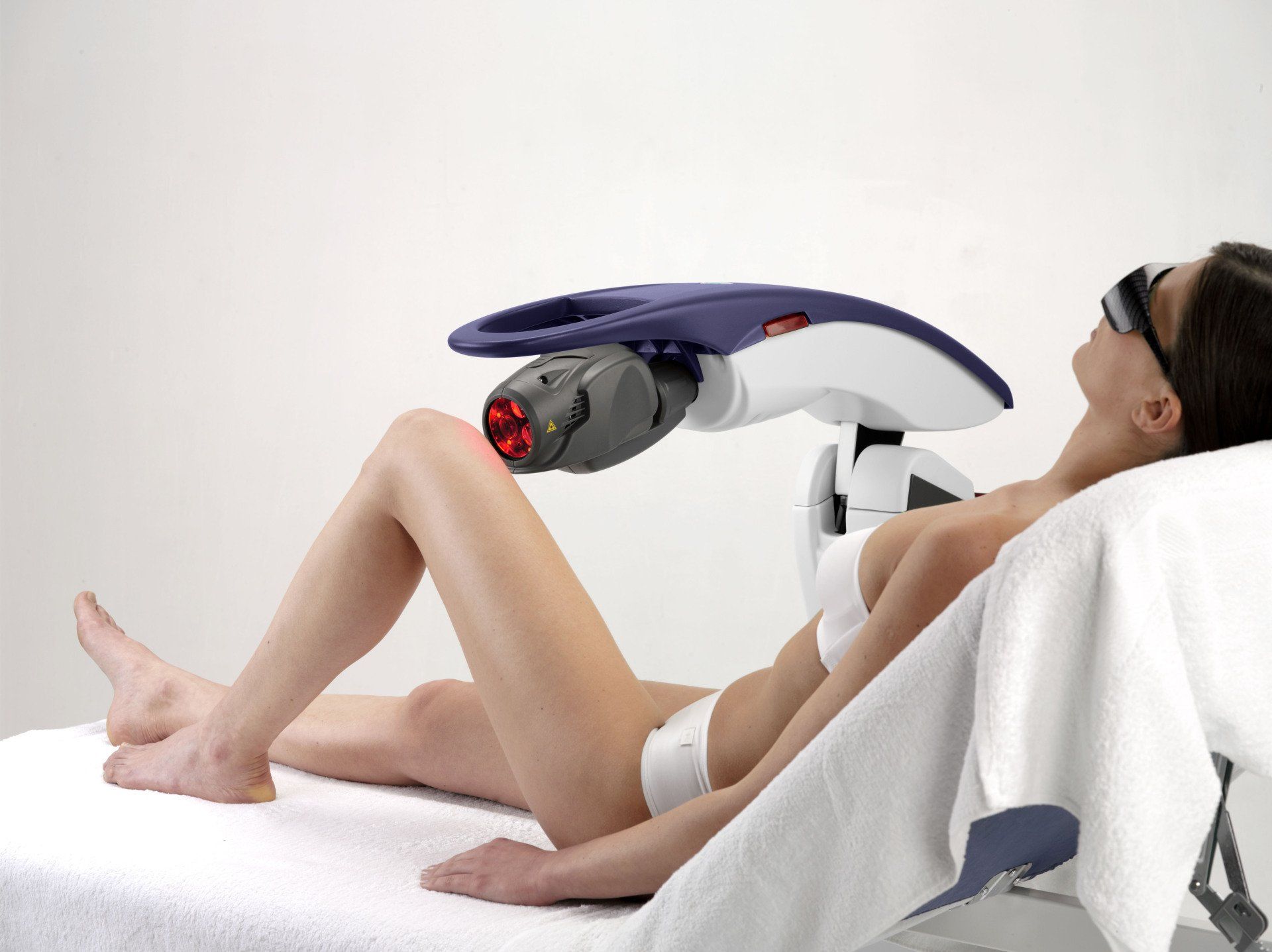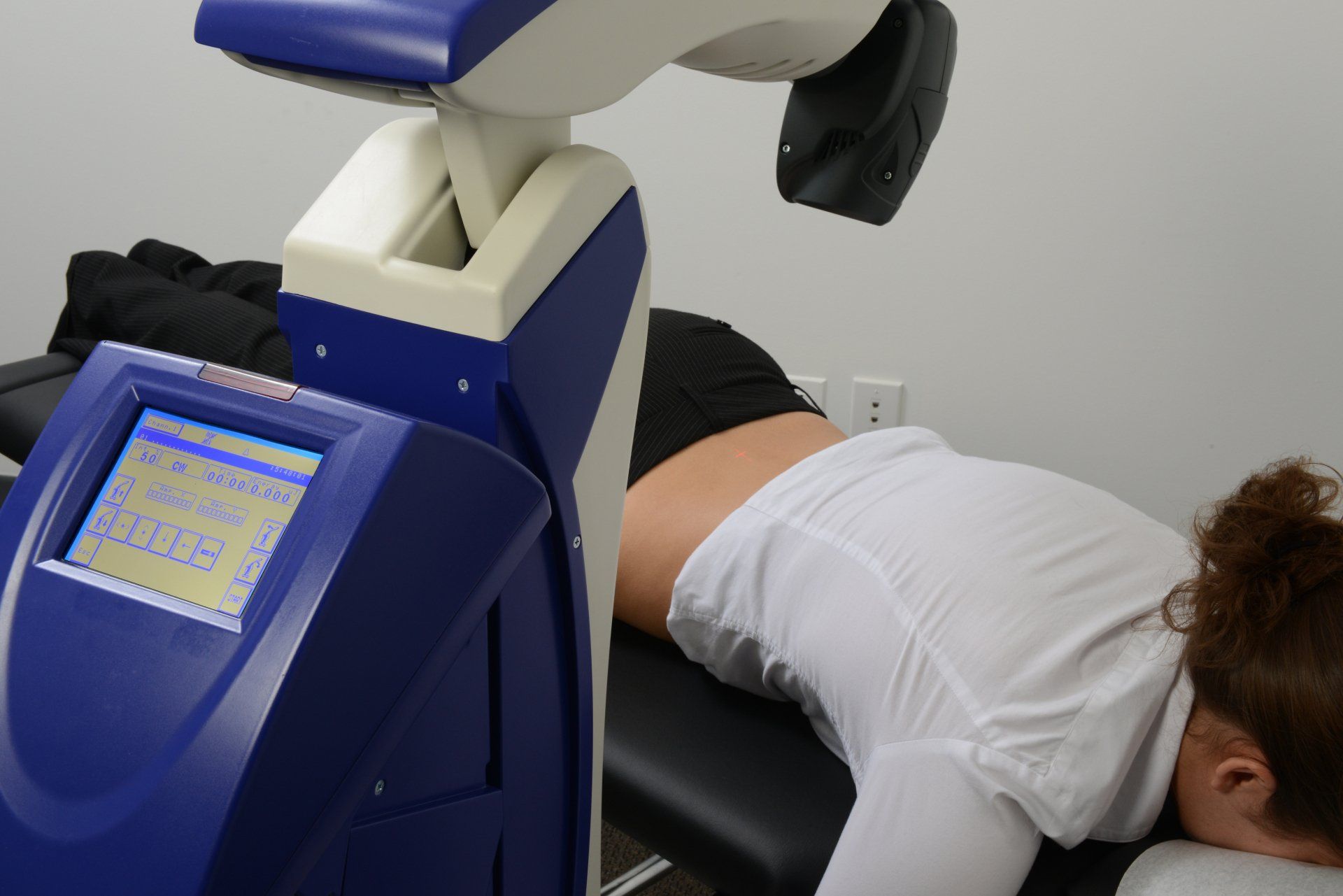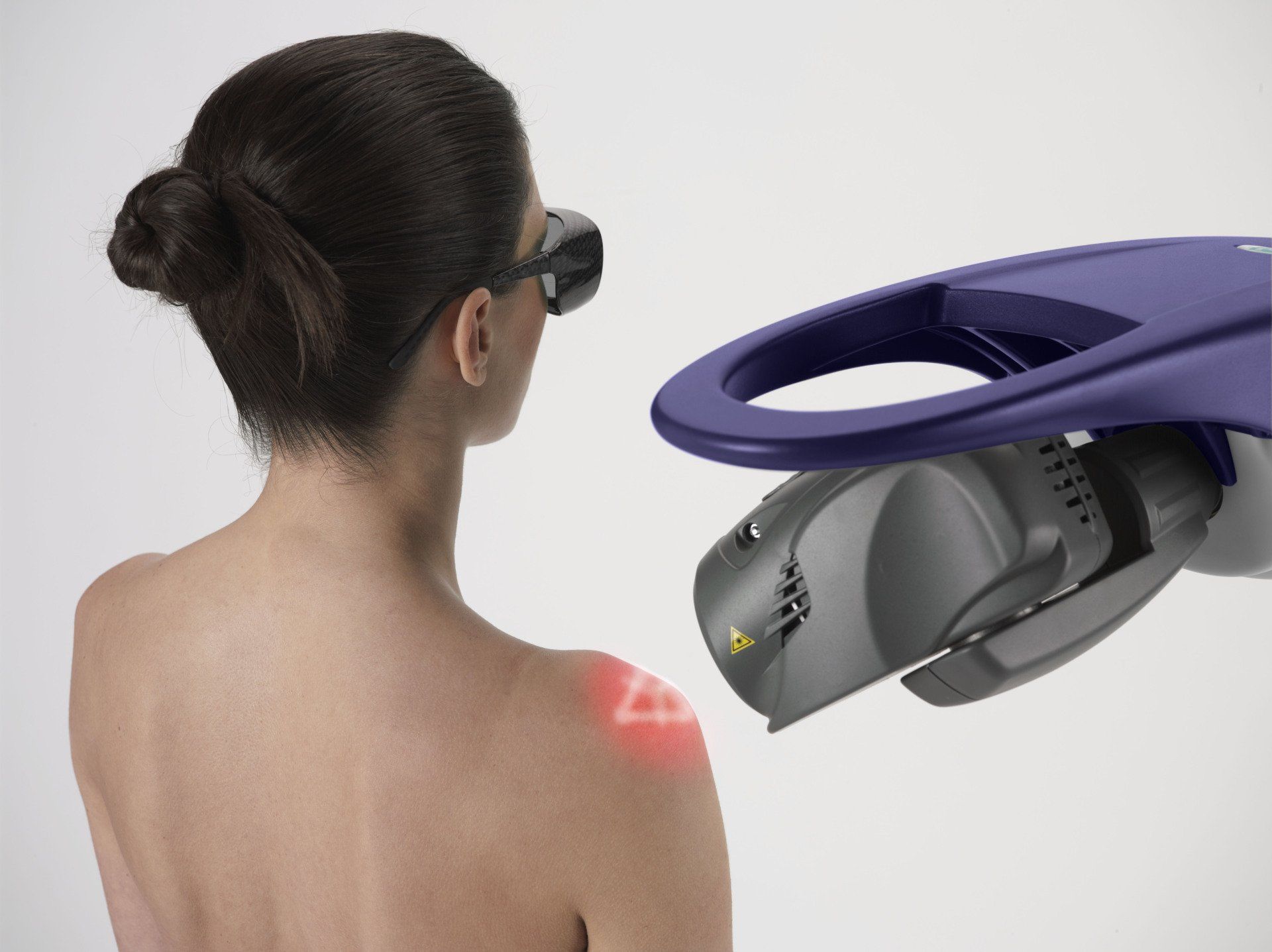OAK FOREST LASER THERAPY CENTER
MLS Laser Therapy is quickly becoming the standard of care in alleviating both acute and chronic pain.
Unlock the Full Healing Potential of Your Body
MLS Laser Therapy effectively treats pain and inflammation associated with the following conditions:
- Plantar Fasciitis
- Neuromas
- Neuropathies
- Arthritis and Bursitis
- Sports injuries
- Tendon & ligament injuries
- Back & joint pain
- Muscle sprains & strains
- Tendonitis
- Wounds
- Post-surgical swelling
- Disc disease
- Sciatic
- Knee Conditions
- Migraines
10 Benefits of MLS® Laser Therapy
1.
Anti-Inflammatory: MLS® Laser Therapy has an anti-edema effect as it causes vasodilation, but also because it activates the lymphatic drainage system which drains swollen areas. As a result, there is a reduction in swelling caused by bruising or inflammation.
2.
Analgesic: MLS® Laser Therapy has a beneficial effect on nerve cells. It blocks pain transmitted by these cells to the brain which decreases nerve sensitivity. Also, due to the decreased inflammation, there is less edema and less pain. Another pain blocking mechanism involves the production of high levels of pain killing chemicals such as endorphins and enkephalin from the brain and adrenal gland.
3.
Accelerated Tissue Repair and Cell Growth: Photons of light from lasers penetrate deeply into tissue and accelerate cellular reproduction and growth. The laser light increases the energy available to the cell so that the cell can take on nutrients faster and get rid of waste products. As a result of exposure to laser light, damaged cells are repaired faster.
4.
Improved Vascular Activity: Laser light will significantly increase the formation of new capillaries in damaged tissue which speeds up the healing process, closes wounds quickly and reduces scar tissue. Additional benefits include acceleration of angiogenesis, which causes temporary vasodilation and increase in the diameter of blood vessels.
5.
Increases Metabolic Activity: MLS® Laser Therapy creates higher outputs of specific enzymes, greater oxygen and food particle loads for blood cells.
6.
Trigger Points and Acupuncture Points: MLS® Laser Therapy stimulates muscle trigger points and acupuncture points on a noninvasive basis providing musculoskeletal pain relief.
7.
Reduced Fibrous Tissue Formation: MLS® Laser Therapy reduces the formation of scar tissue following tissue damage from cuts, scratches, burns or surgery.
8.
Improved Nerve Function: Slow recovery of nerve functions in damaged tissue can result in numbness and impaired limbs. Laser light speeds the process of nerve cell reconnection and increase the amplitude of action potentials to optimize muscle healing.
9. Immunoregulation: Laser light has a direct effect on immunity status by stimulating immunoglobulins and lymphocytes. Laser emissions are absorbed by chromophores (molecule enzymes) that react to laser light. Upon exposure to the laser, the enzyme flavomononucleotide is activated and starts the production of ATP (adenosinetriphosphate), which is the major carrier of cell energy and the energy source for all chemical reactions in the cells.
10.
Faster Wound Healing: Laser light stimulates fibroblast development in damaged tissue. Fibroblasts are the building blocks of collagen, which is the essential protein required to replace old tissue or to repair tissue injuries. As a result, MLS® Laser Therapy is effective post surgically and in the treatment of open wounds and burns.
Biological Effects
Primary
Secondary
Photochemical
Direct transfer of energy to the biological sublayers (endogenous or exogenic chromophores).
- Enzymatic activation
- Increase in ATP production
- Modulation of cellular metabolism
- Effect on pain perception threshold
Photothermal
Photothermic interaction is based on the conversion of option radiation into thermal energy which, at a microscopic level, occurs through the inelastic encounter between excited molecules following the absorption of photons.
- Increase in circulation
- Increased supply of oxygen and nutrients
Photomechanical
The absorption of energy involves the formation of mechanical waves.
- Production of an extracellular matrix (important in tissue repair & regeneration)
- Acceleration of lymphatic peristalsis
- Re-absorption of edemas
- Reactivation of microcirculation
Effect on Cells
- Increase in ATP synthesis
- Increase in the production of RNA
- Increase in cellular proliferation
- Induction of differentiation processes
- Release of growth factors (fibroblasts) and other substances
- Increase in the production of molecules of the extracellular matrix (fibroblasts & condrocytes)
Effect on Tissue
- Modulation of the inflammatory processes
- Remodeling of the extracellular matrix
- Induction of lymphatic and vascular regeneration
- Stimulation of the endothelial function
- Reduction of the edema re-absorption times
- Prevention against the formation of scar tissue and hyperkeratosic lesions
Systemic Effects
Analgesic effect:
- Blocking of pain stimulus conduction
- Hyperemia and “wash out” of the algogenic substances
- Increase in endorphin synthesis
- Pain threshold modulation
Anti-inflammatory and anti-edema effect:
- Increase in the caliber and modulation of lymphatic and capillary vessel permeability
- Hyperemia and “wash out” of the pro-inflammatory molecules
Biostimulating effect:
- Increase in the supply of nutrients, oxygen and growth factors
- Cellular function activation
- Modulation of cell proliferation and differentiation (e.g., nerve regeneration)
- Increase of matrix protein synthesis
- Reduction of scar tissue formation

(708) 388-1522
Facebook page
Contact Us
Call Us Today
Vaught Chiropractic
15000 Cicero Ave. Ste 100
Oak Forest, Illinois 60452
Main: 708-388-1522
Fax: 708-388-2880





